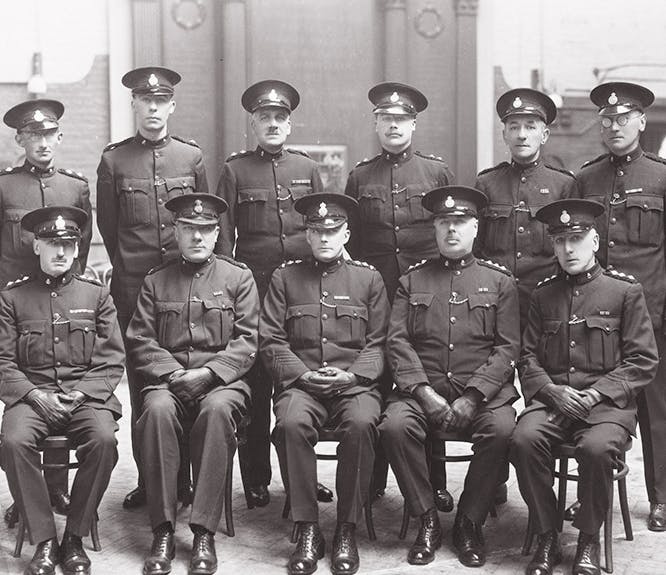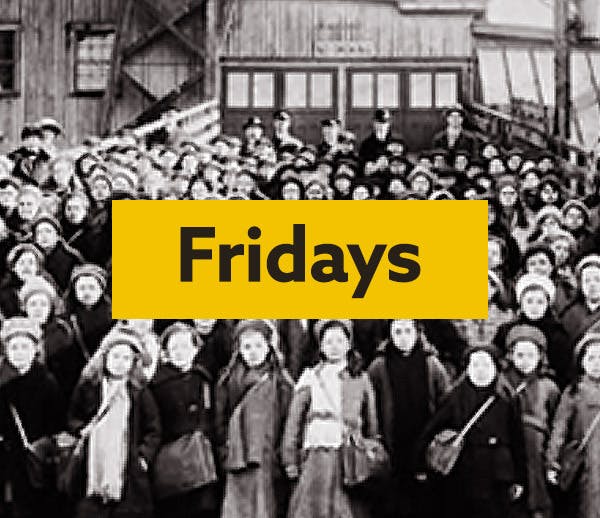Discover Hollywood stardom and dive into Angela Lansbury's family tree
5-6 minute read
By Jessie Ohara | October 25, 2022

Learn more about international treasure Angela Lansbury and immerse yourself in a life drenched in popular media and politics.
Dame Angela Brigid Lansbury DBE, born in October of 1925, was an Irish-British actress and singer, famed across the globe for becoming an integral part of the Golden Age of Hollywood cinema.
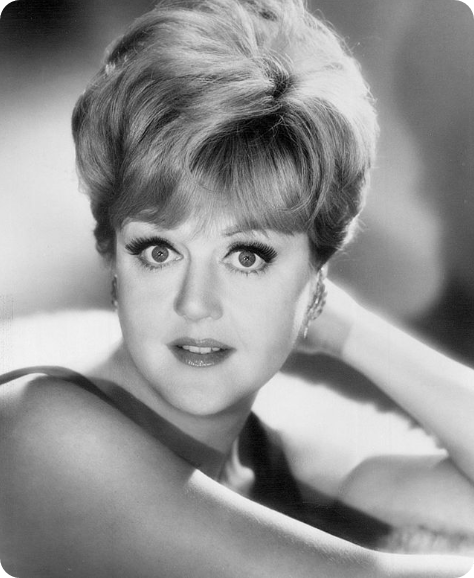
Angela Lansbury in 1966.
Known for her roles in Gaslight, National Velvet and The Picture of Dorian Gray through the 1940s, she went on to have a prolific career in theatre and television as the century progressed. She was appointed Commander of the Order of the British Empire in 1994, and Dame Commander of the Order of the British Empire in 2014, joining the likes of Maggie Smith and Judi Dench. You can find her DBE record in our Knights Of The Realm & Commonwealth Index.
Having passed away on 11 October 2022, we decided to delve into her family tree and see if we could determine where such an incredible talent came from.
Dame Angela Lansbury's parents
Angela Lansbury Brigit was born at St Pancras in London to upper-middle class parents, Moyna Macgill (born Charlotte Lillian McIldowie) and Edgar Lansbury.

Angela Lansbury's birth record. View this record here.
Moyna Macgill was born in Belfast, her father being a wealthy solicitor and director of the Grand Opera House in Belfast, sparking her interest in the theatrics. She made her stage debut in 1918 at the Globe Theatre in London, quickly becoming the leading actress of her day. By her early twenties, she was married to actor Reginald Denham, and together they had a daughter, Isolde. Isolde would later become Angela's half-sister.
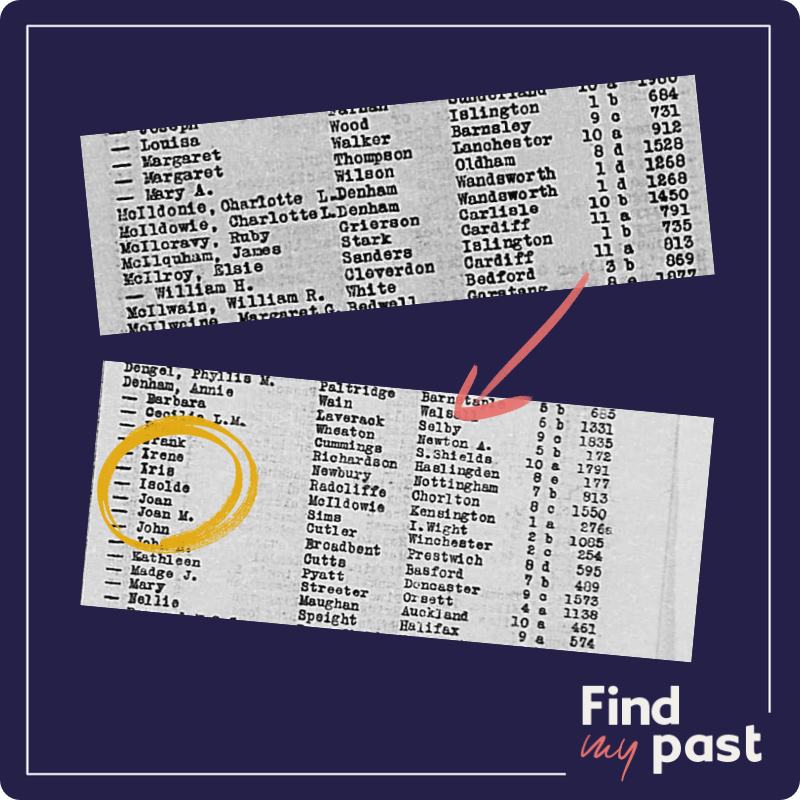
Charlotte and Reginald's marriage record in 1919, and their daughter Isolde's birth record in 1920.
It was when Moyna was 26 however that she met Edgar Lansbury, a timber merchant and socialist politician. He had been previously married to a woman named Minnie Lansbury. We can find them together in the 1921 Census, alongside a visitor and a servant.
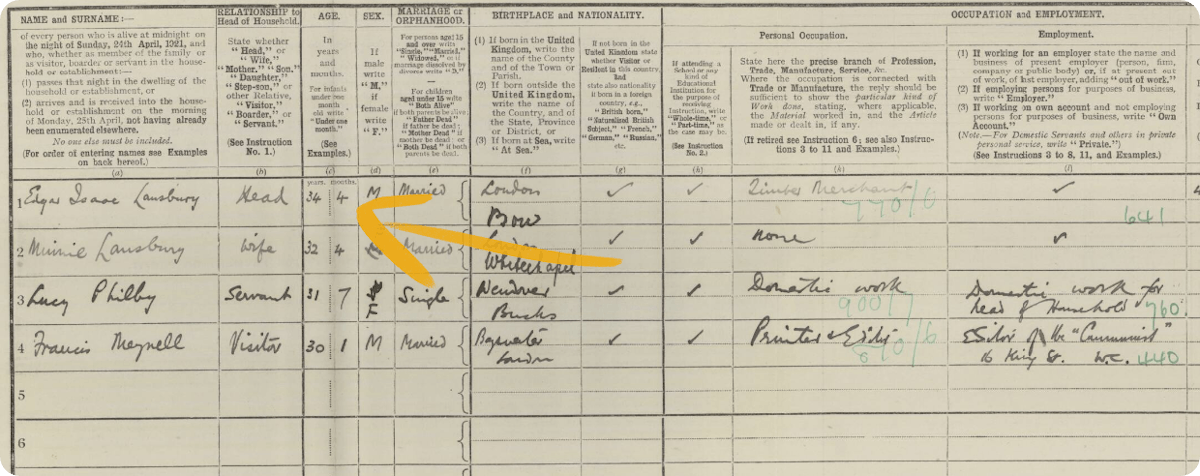
Edgar Lansbury's 1921 Census return. View this record here.
Interestingly, this record allows us to see Edgar's involvement in the Communist Party of Great Britain in its infancy - the party was only founded a year earlier, in 1920, and his visitor is none other than Francis Meynell, the editor of the Communist newspaper. You can search the Communist (London) in our newspaper archive.
Unfortunately, Minnie died in 1922. Edgar went on to marry Moyna in 1924, and it was the year after that international treasure Angela Lansbury was born at their garden flat in Regents Park.
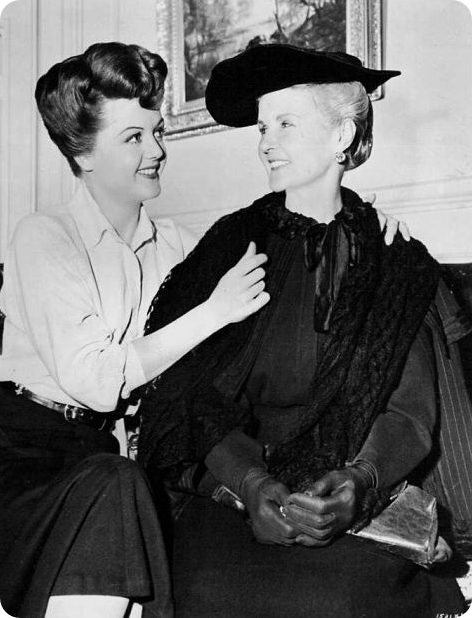
Angela Lansbury and her mother Moyna Macgill in 1951.
The wealth and success of the couple took a turn for the worst in 1927, when Edgar and his brother, William Arthur, faced questioning over the finances of their timber business in bankruptcy court. The Aberdeen Press and Journal reported:
"'The firm failed last June with total liabilities of £42,278, of which £26,143 was expected to rank for dividend against net assets of £11,399. The Debtors attributed the failure to lack of working capital and cut prices, but in the opinion of the Official Receiver the heavy drawings of the partners, amounting to £18,873 during the three-and-a-half years preceding the failure, was an important factor.'"
It seems that Edgar had been living a life beyond his means, and indeed he admitted to that in court, conceding to unjustified extravagance.
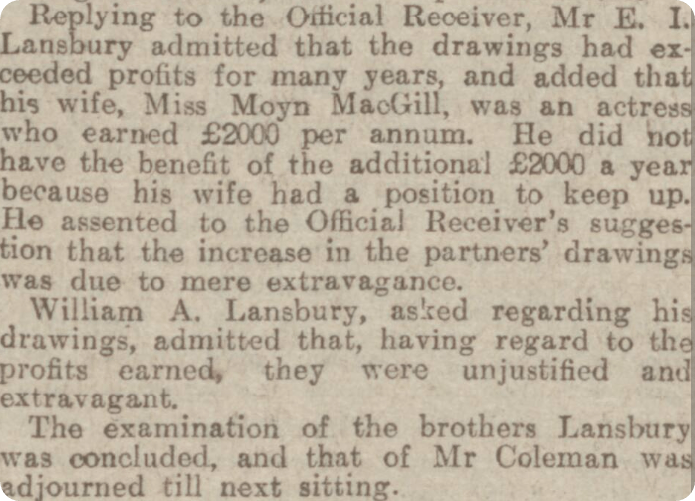
Edgar reportedly admitted to having larger outgoings than were necessary. The Aberdeen Press and Journal, 1927.
The situation was not quickly resolved; six months later, the Westminster Gazette reported that he was questioned about the source of two separate sums of money transferred to his capital account and drawing account.
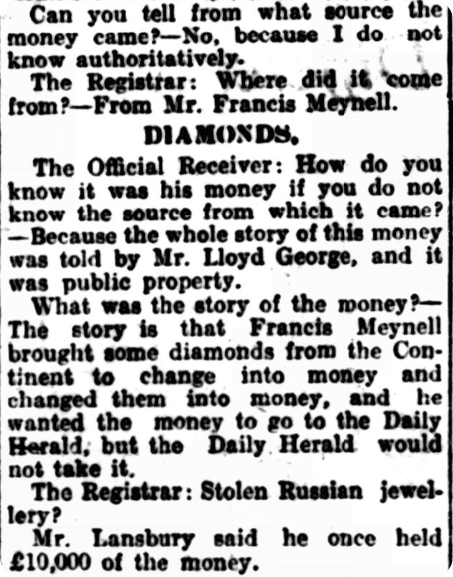
Edgar is questioned about his accounts in the Westminster Gazette, 1927.
Though Lansbury's responses remained vague, claiming he could not identify the precise source of the money, it seems it involved the purchase of allegedly stolen Russian diamonds by none other than Francis Meynell - the same Francis Meynell we see visiting Edgar in the 1921 Census.
Despite all of this, Edgar was a supporter of the Suffragette movement throughout his life, and had at one point been jailed for protesting increasing tax rates in his district of Poplar. At the time, Poplar was one of the poorest neighborhoods in London.
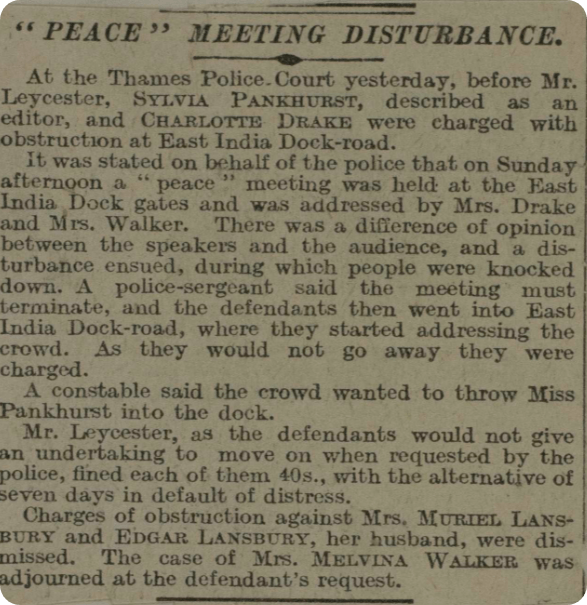
Edgar and his first wife Minnie's case for disturbing the peace was dismissed, while Sylvia Pankhurt was charged. Found in the Suffragette Collection.
Before his early death from stomach cancer in 1935, he went on to write a book about his father, George Lansbury. But who was he?
Stepping further back...
George Lansbury, Angela's grandfather, was born in Suffolk in 1859. He was the third of nine children to railway worker George Lansbury Senior and his wife Annie.

George Lansbury's 1859 birth record. View this record here.
He was politically active from a young age. Both of his parents were particularly progressive, and he was exposed to reformers such as William Gladstone and Richard Cobden early on in his life. He began to read the political Reynold's Newspaper, which you can also search in our newspaper archive.
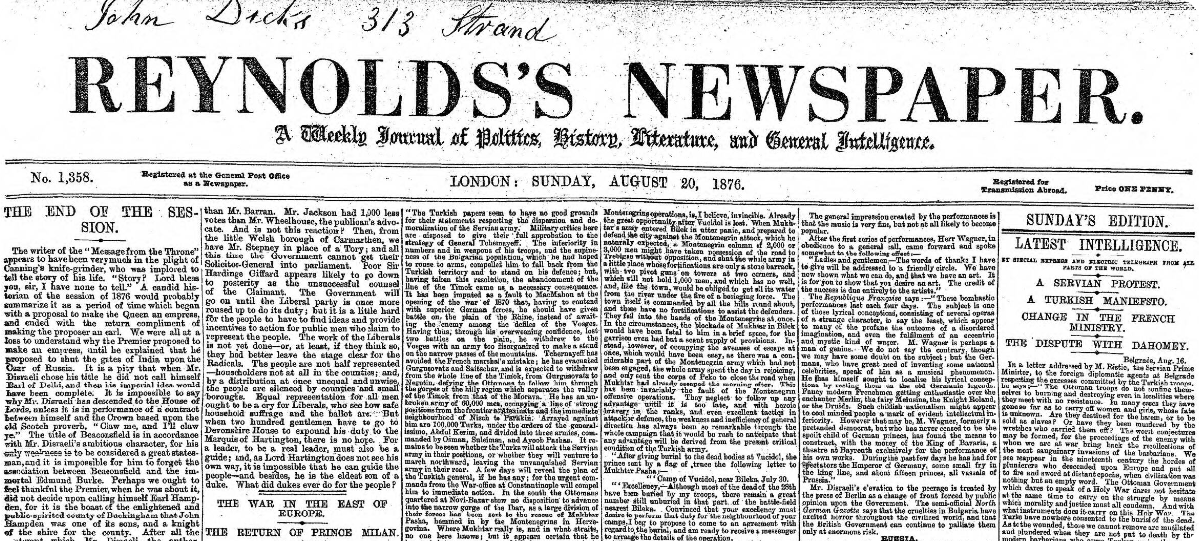
Reynold's Newspaper described itself as a 'weekly journal of politics, history, literature and general intelligence'.
We can find George as a 12-year-old in the 1871 Census, and then again at 22 in the 1881 Census. By that time, he was married to his wife Elizabeth, and together they had had 6-week-old Bessie - Angela Lansbury's great-aunt.
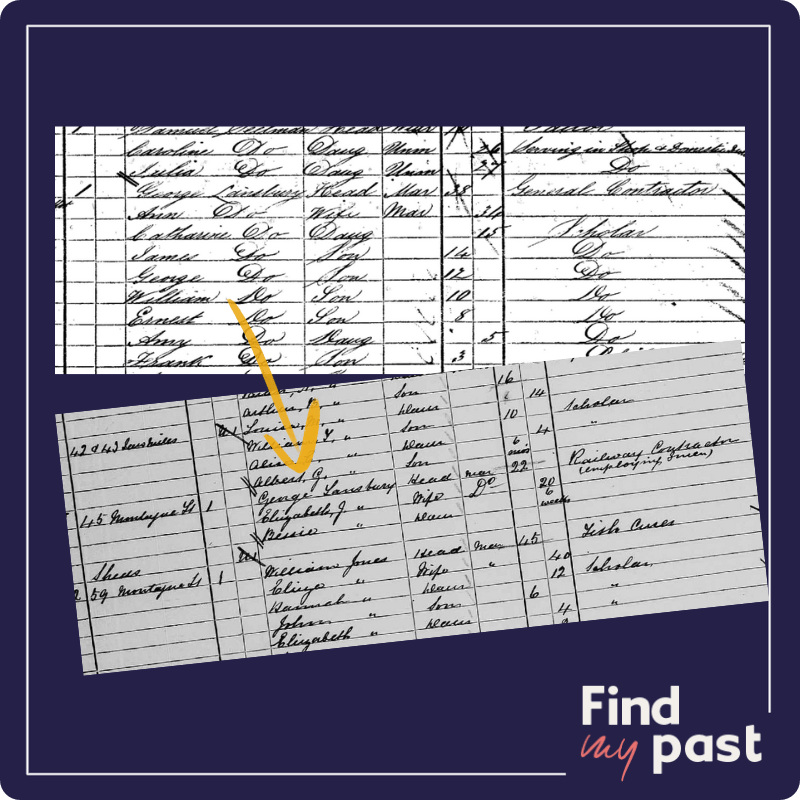
George Lansbury in the 1871 and 1881 Censuses.
It was, in fact, the year that his father died - 1875 - that the 14-year-old George met Elizabeth. They married five years later, when George was 19.
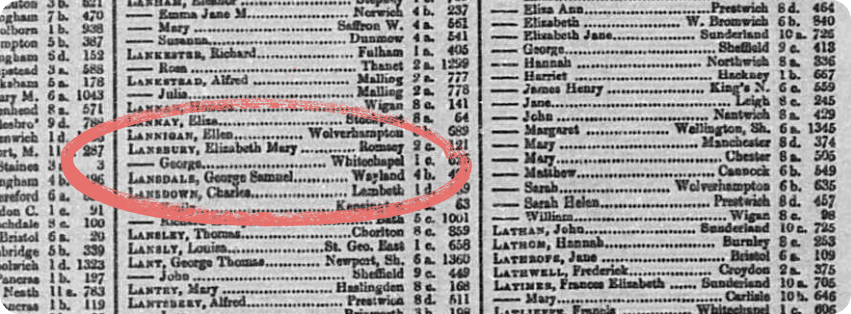
George and Elizabeth's marriage record, 1880. View this record here.
George went on to become a social reformer and prominent British politician, who led the Labour Party from 1932-1935. Similar to his son and Angela Lansbury's father, Edgar, he was also passionate about the Suffragette movement. Unlike Edgar, he didn't manage to evade arrest for his protests.
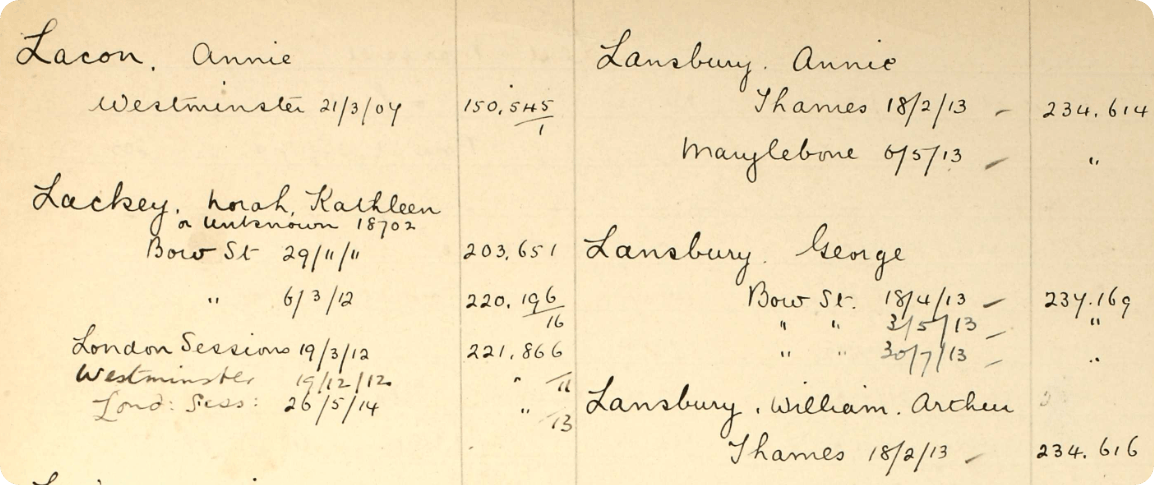
George's 1913 arrest record, found in our Suffragette Collection. View this record here.
Though Edgar is nowhere to be found on this record, two of George's other children are - Annie, his second eldest, and William, the brother that Edgar formed a timber merchandise company with.
Indeed, Angela's grandfather had always been a strong and passionate campaigner for women's rights. In a letter he wrote to the Pall Mall Gazette in 1891, he called for those more liberally-minded in his political party to:
"'...shake themselves free of party feeling and throw the energy and ability they are now wasting on minor questions into... securing the full rights of citizenship to every woman in the land.'"
Following so strongly in her grandfather's footsteps was Angela Lansbury, who supported and campaigned for multiple women's charities throughout her life, particularly focusing on those that offered refuge to women who were subject to domestic violence. She said of her grandfather that she felt 'awed' by him, and that he was 'a giant in [her] youth'. Looking into our records, it's not difficult to understand why.
The generations before
It is tracing back from here that we begin to see more working-class roots emerge for Angela Lansbury and her family. In the 1861 Census, we can find her great-grandfather George Senior working as a railway store-keeper in Warwickshire. Also listed on the return are two lodgers, George and William Brown, presumably a father and son.

George Lansbury Senior's 1861 Census return. View this record here.
The two lodgers both worked at the railway with Angela's great-grandfather, despite William only being 10 years old. At this point, George has three children - Catherine, James, and George junior, Angela's grandfather.
However, by 1871, George has eight children to provide for. He is listed as a general contractor, and though employer information wasn't asked for until the 1921 Census, George and his large family were living at Smiths House Whitechapel Coal Depot.
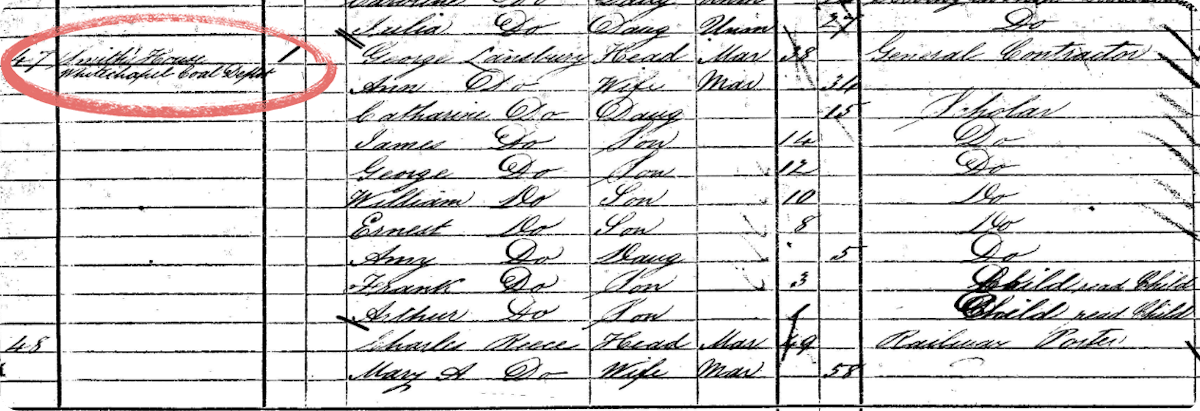
George's 1871 Census record. View this record here.
It would be a fair assumption to say that living on-site would offer subsidised costs, something which may have come in particularly handy when trying to provide for a family of 10. Perhaps this is where his son George's campaigning spirit came from - he spent the majority of his life fighting not only for women's rights but for the working classes of his district in East London. The areas the family spread roots in, Whitechapel and Poplar, were historically some of more deprived neighborhoods in the capital.
It's clear even only going back three generations that Angela Lansbury's family were truly incredible. They saw it all, from her father's political escapades to her mother's time gracing the spotlight, and from her grandfather's campaigning for women's rights to the working-class roots of his father before him. What becomes obvious is how much passion and fight her family had - the same passion and fight we saw in Angela Lansbury herself.



